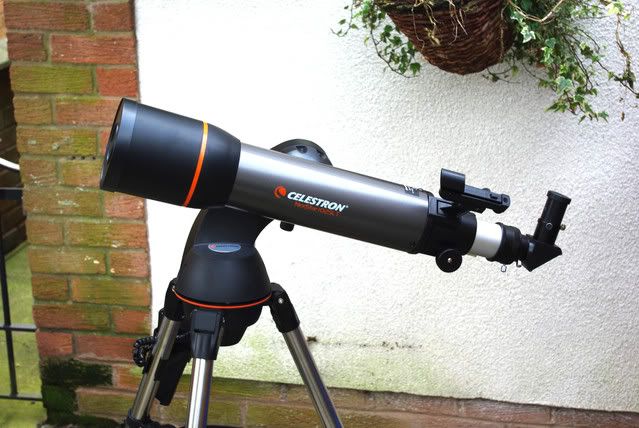|
|
Post by John Parry on Feb 19, 2009 1:42:57 GMT -5
I have a tendency to look wistfully at long lenses, knowing that the serious ones are laughably expensive (I mean that in the hysterical sense!). The only claims to halfway decent ones I have are a Sigma 400/5.6 for the Yashica AFs, and a Pentacon beast of a 300 M42, which if I remember is a 3.5 (at the expense of weighing about the same as a small pallet of bricks).. So I've regretfully lusted and moved on.
But I was talking to a friend about getting a telescope to do a bit of astronomising. I used to have a 4 inch reflector, until the garage roof leaked and wrote it off. That was never a success, as everything had so much slack - and you could see the cog teeth slicing ever-so-thin slivers off the worm drives as you adjusted the altitude! But I finally thought - right, let's do this properly. So now I have a 4" refractor on order with a computer goto drive and the works.
The bit to do with cameras is that I'm also getting a t-mount 1 and a quarter inch adapter, plus a PK > t-mount adapter. Pretty sure I already have M42 and Konica t-mount adapters.
So if any superstar models sunbathe in the nude on Blackpool beach, they won't escape my set-up!
Regards - John
|
|
|
|
Post by John Parry on Feb 20, 2009 10:25:44 GMT -5
With a focal length of 660mm and f = 6.8 I'm looing forward to experimenting.  Anyone hung a digital on a telescope? I'm hoping the camera can take care of the lack of aperture control without having to bother with filtering during the day, and for lunar shots, once I've fed in the 'lens' information. Regards - John |
|
|
|
Post by John Parry on Feb 22, 2009 19:16:56 GMT -5
Well I've learnt something. The t-mount adapters work fine for terrestrial pictures - the camera does take care of the exposure at full aperture, and the auto-focus indicator gives its 'OK' signal when I hit the correct focus point. The moon will probably need a filter, but it only needs to be an ND to cut the brightness down.
As far as night time extended exposures are concerned I found an interesting article on the net. Basically, if you want to take anything longer than a couple of seconds for deep-space objects, you need a telescope with a good equatorial mount so that your tracking system is only moving in one direction. An alt-azimuth mount such as mine tracks in two directions at once. What that means is that although the object you are tracking stays centred in the eyepiece (or on the camera chip), the image rotates at the same time. So the fine detail, which is what you are trying to capture by the time exposure, starts to blur after a few seconds.
Apparently you can achieve better results with a cheap web-cam (because of software processing) than you can with a good digital camera. Wouldn't you know it!
As it happens it makes no difference to me. My money was spent on the best optics I could get for the price and a Goto system to make setup and go as easy as possible. An equivalent equatorial tracking system would have been four times more expensive and I couldn't have afforded it. I'm quite happy with what I've got.
But if anyone wants to get into deep sky astrophotography with their digital (or film cameras) they should bear this in mind!
Regards - John
|
|